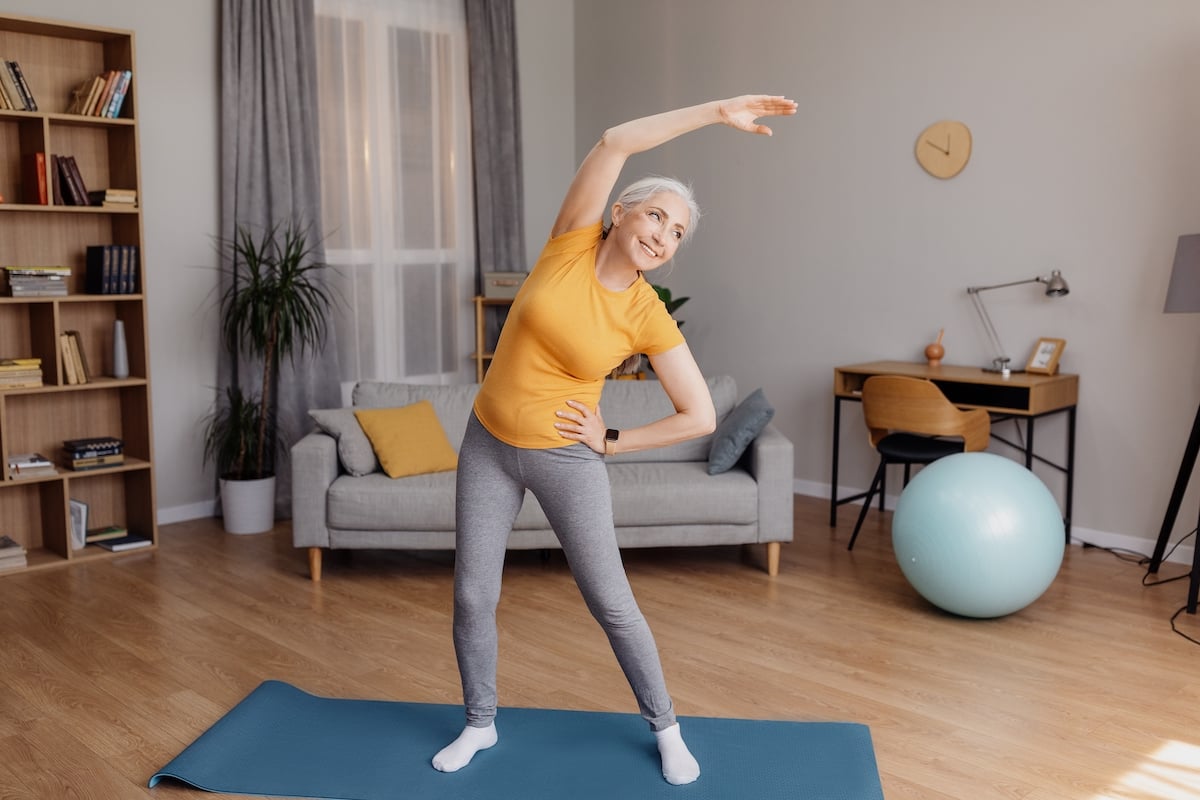
What Types of Exercises are Effective for Reducing Chronic Pain?
Published by Vivage on
Aug 1, 2022 8:00:00 AM
According to the Cleveland Clinic, “Chronic pain is pain that is ongoing and usually lasts longer than six months…Pain signals remain active in the nervous system for weeks, months, or years. Some people [experience] chronic pain even when there is no past injury or apparent body damage.”
The International Association for the Study of Pain reports that chronic pain affects an estimated 20% of people worldwide and accounts for 15% to 20% of physician visits. Until recent years, rest was always recommended for treating and managing chronic pain. However, research now shows that exercise is beneficial in reducing the severity of chronic pain.
Our long-term care communities throughout Colorado and Missouri offer post-hospitalization rehabilitation services to help individuals recover from injuries or surgeries in a safe environment that promotes their overall health and wellness. Because the condition impacts so many people, the Vivage team is sharing safe and effective exercises for managing and reducing chronic pain.
It is recommended that you consult with your healthcare provider before starting a new exercise program.
Aerobic Activities
“Aerobic exercise is any physical activity that makes you sweat, causes you to breathe harder, and gets your heart beating faster than at rest (study.com).” In addition, participating in aerobic activity improves your circulation and helps your body use oxygen better; therefore, it can decrease muscle stiffness and help relieve chronic pain.
However, some aerobic exercises are more effective for reducing chronic pain than others. For example, let’s compare walking and running. While both can cause you to sweat, breathe harder, and increase your heart rate, walking is the better option for managing chronic pain symptoms. This is because walking is easier on your joints than running and is usually a safer option while still offering the same physical and mental health benefits.
Other safe and effective examples of aerobic activities include:
- Using an elliptical
- Cycling
- Stationary bike
- Swimming
- Dancing
Stretching Exercises
Even though stretching may not seem like an exercise, it is a good way to keep your body moving and can go a long way in managing chronic pain. Stretching exercises and programs, such as yoga and tai chi, help to relieve muscle tension and stiffness, keep your joints flexible, help you maintain your range of motion, and can even improve your mobility.
Strength Training
Maintaining strong muscles is essential to leading an active, fulfilling lifestyle. By helping to maintain independence, allowing you to continue to participate in the activities you enjoy, and preventing or reducing symptoms of chronic diseases such as arthritis, osteoporosis, or heart disease, maintaining strong muscles and bones is crucial.
On top of all this, strength training exercises are also good for reducing chronic pain since building muscle can help stabilize your joints and prevent future injuries. Healthline states, “for people living with chronic pain, adequate core strength is especially important. It helps you maintain proper posture and balance and reduces the risk of injuries that could lead to more pain.”
When people think of strength training, it is common to assume that you have to go to the gym to get the maximum benefits. Of course, this is not the case. While you can use the free weights or machines found in a gym, using your own body weight or doing resistance exercises are also good options for strength training and building muscle.
Post-Hospitalization Rehabilitation at Vivage
Our post-hospitalization rehabilitation and outpatient therapy services at Vivage focus on providing care that promotes overall wellness and helps individuals meet their recovery goals. Our long-term care communities in Colorado and Missouri help individuals regain and/or maintain their strength through physical therapy, occupational therapy, speech and language therapy, and more.
With nutrition-specific dining options and medical physicians and nurses available, we focus on strength and recovery. Whether you have recently returned home from a post-hospitalization recovery stay at one of our communities, have recently been discharged home from the hospital, or you notice that your body isn't quite functioning at the same level it was before, outpatient therapy might be the answer for you.
Staying active is a major component of leading an engaging lifestyle. We invite you to visit our website or contact a member of our team to learn more about our communities and discover the Vivage difference.